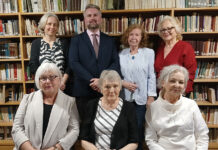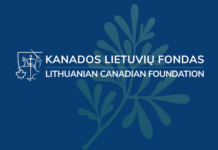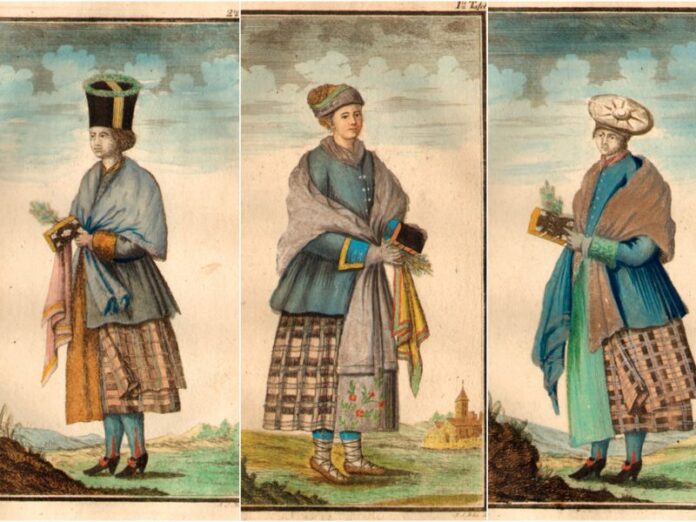
From Old Prussia to Kaliningrad
Some time ago, Latvian historian Agris Dzenis wrote an article for deepbaltic.com about the Old Prussians. He writes that “The Latvian and Lithuanian people have the Old Prussians to thank more than anyone else for their existence.” Who were they?
The Old Prussians belonged to the Western Baltic group of tribes, which also included the Curonians (kuršiai), Samogitians (žemaičiai), Skalvians (skalviai), Galindians (galindai) and Yotvingians (jotvingiai). Around 3000 years before the birth of Christ, the Old Prussians broke away from the first Indo-European peoples and entered the land where they would live until their extinction. Today the area where the Old Prussians lived is divided between Russia (the province of Kaliningrad) and Poland.
In his work Germania, Roman historian Tacitus was the first to mention the Western Balts (in the first century). Tacitus called them as “Aesti”, which means “easterners”, known in Lithuanian as “aisčiai”. The Aesti were described as industrious farmers and peace-loving people. They collected amber from the seashore, and it was amber, valued more highly than gold in ancient Rome, that brought the regions inhabited by Balts to the attention of the civilized people of Europe.
The 11th-century chronicler Adam of Bremen characterized the Prussians as very humane people (“homines humanissimi“), who often saved seafarers from shipwrecks and pirate attacks. The Old Prussian tribes inhabited eleven regions (in the Old Prussian language, “tautos“), whose names are mentioned in writings from the 13th century. Each region was governed by a ruler and an assembly of respected nobles. They formed a federation of tribes, and although internal conflcts were not uncommon, they united in times of war.
In Old Prussian society unusually great importance was placed on “spiritual intelligence” and on the high priests and priestesses who carried out religious ceremonies – sacrifices, the blessing of land and dwellings. As late as the 16th century, the chronicler Simon Grunau observed a high priest at work in a Prussian village, telling the people about the origins and gods of the Prussians, and giving ethical instruction, which the chronicler described as explanations of the ten commandments.
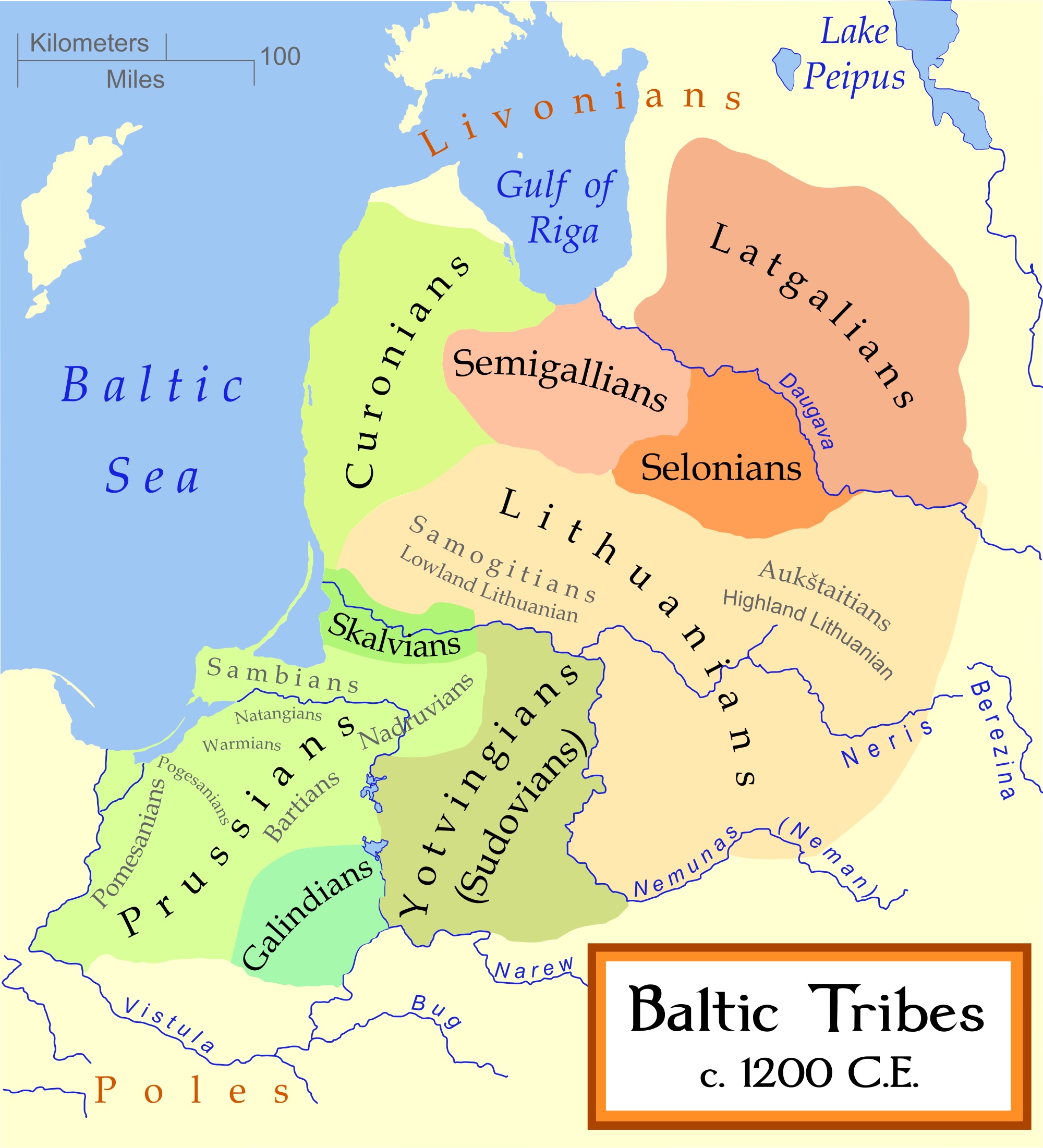 The richness of “the amber lands” and their favourable position for trade on the Baltic Sea long tempted invaders. In the middle of the 1st century CE, a conflict began between the Old Prussians and their southern neighbours – the Eastern Slav tribe called the Masurians or Mazovians (Lith. mozūrai). The Masurian princes had tried to subjugate the Old Prussians, but they remained loyal to their gods and their freedom. In the 7th century they routed an army made up soldiers of the Eastern Slavs and the powerful nomadic Turkic tribe the Avars.
The richness of “the amber lands” and their favourable position for trade on the Baltic Sea long tempted invaders. In the middle of the 1st century CE, a conflict began between the Old Prussians and their southern neighbours – the Eastern Slav tribe called the Masurians or Mazovians (Lith. mozūrai). The Masurian princes had tried to subjugate the Old Prussians, but they remained loyal to their gods and their freedom. In the 7th century they routed an army made up soldiers of the Eastern Slavs and the powerful nomadic Turkic tribe the Avars.
The Old Prussian lands were partly protected from Eastern Slav attacks by forests and marshes, but invaders also came from the Baltic coastline: the Scandinavian Vikings arrived by boat in search of both trade and plunder. Many attacks by Danish Vikings were recorded in 12th-century chronicles, but their aim was plunder, not conquering territory.
After Masuria joined the Kingdom of Poland, the Polish leader repeatedly tried to subjugate the Old Prussians as well. In the second half of the 10th century, Poland adopted Christianity. King Bolesław the Brave was the first to attempt to convert the Old Prussian lands to Christianity. At his request, the first missionary arrived in 997 – Adalbert, the Bishop of Prague. The Old Prussians knew that converting to Christianity could threaten their independence, and urged Adalbert to leave their land, but he did not obey – and was killed.
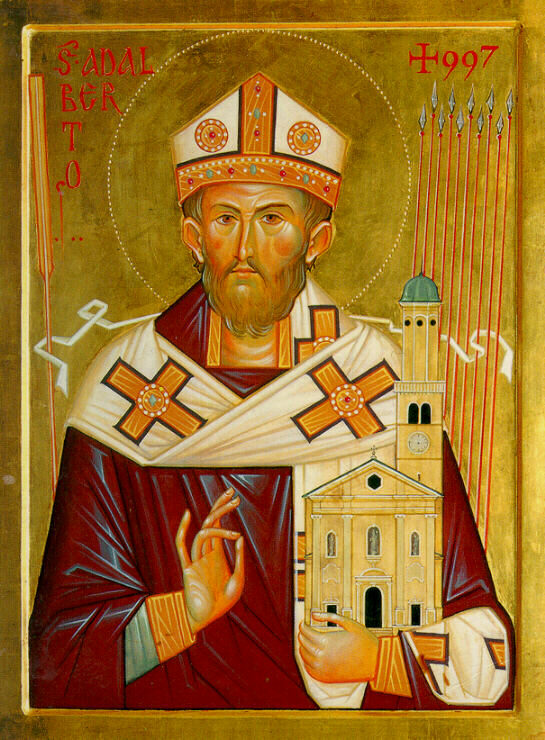 During the 12th and early 13th centuries, the Old Prussians were repeatedly invaded by Polish armies. In 1218, the Pope declared a holy war against the Prussians, and crusaders from all over Europe started to join the Polish army. At first their numbers were not very large, so the Old Prussians managed to repel their attacks successfully.
During the 12th and early 13th centuries, the Old Prussians were repeatedly invaded by Polish armies. In 1218, the Pope declared a holy war against the Prussians, and crusaders from all over Europe started to join the Polish army. At first their numbers were not very large, so the Old Prussians managed to repel their attacks successfully.
In 1226, Konrad, the Prince of Masuria, summoned the Teutonic Knights to help fight the Old Prussians. After the knights were expelled from Palestine, Konrad offered the Order the region of Kulma, which Poland had conquered. In that same year, the Holy Roman Emperor, Friedrich II, assigned the Old Prussian lands to the Order, and gave them the authority to subdue the inhabitants. The German knights built castles, whose garrisons would regularly destroy surrounding villages to force the Old Prussians to convert to Christianity and recognize the authority of the Order. Despite tenacious resistance from the Old Prussians, military strength was on the side of the Order, joined by the armed forces of all of Europe, whose leaders aissisted the Order hoping for the spoils of war and fame as Christian knights. In 1255, the Czech king Ottokar II travelled with a large army through the Old Prussians’ southern regions. By the mouth of the River Priegle he built a fortress, which later would become known as Königsberg (“king’s hill” in German; Karaliaučius in Lithuanian; now the city of Kaliningrad in Russia).
The Old Prussians’ resistance against the crusaders was hindered by a lack of internal unity, and the Order managed to get many Old Prussian nobles over to their side, giving them the largest plots of land and thus preserving their high social status even after Christianization.
A number of peace treaties and truces were concluded between the Order and the Old Prussians, but the Old Prussians repeatedly rebelled. A general Prussian uprising began in 1260. Old Prussians in the different regions chose military leaders and began coordinated acts of war. Many castles, significant points of support for the Order, were taken. The most famous Prussian leader was the Natangian noble Herkus Monte (Lith. Herkus Mantas), who had been held hostage in Germany in his youth and understood European warfare. The Order acted with unusual brutality in suppressing this uprising, completely destroying the dwellings of the rebellious Old Prussians and eliminating their inhabitants. With the help of a regiment of the Margrave of Brandenburg and the Czech king, as well as the defection of some of the Old Prussian leaders, the Order managed to subdue all of the Old Prussian lands by 1283. There was one last uprising in 1295, but it was not successful.
The conquered Old Prussian lands had become part of the state of the German Order. The chronicler Simon Grunau wrote that even at the start of the 16th century, several of the districts laid waste in the 13th century remained desolate. Many Old Prussians had fled the crusaders’ yoke and escaped to Lithuania. Due to the resulting lack of labour in the regions ravaged by war, the Order settled many colonists from Germany there. To ensure the Prussians’ loyalty and to avert the threat of new uprisings, the knights were tolerant: the German colonists were allowed to settle only in the districts left barren by war, and the Order allocated the best land to the remaining Prussians. The Masters of the Order repeatedly stressed that the Prussians must be allowed to stay Prussian, and they did not force the German language or way of life on them.
In 1525, the Catholic state of the Order became part of the secular Duchy of Prussia and Brandenburg, one of the first Lutheran countries in Europe. In the second half of the 16th century, with the support of the Duke of Prussia, three catechisms were produced in Old Prussian – significant testaments to this extinct language. Under the duchy, Poles moved into the western districts of Prussia, while Lithuanian farmers moved into the eastern areas – especially Nadrava and Skalva – and became intermixed with the Prussians. From the end of the 16th century, the parts of Prussia populated with Lithuanians started to be referred to as Lithuania Minor, which in later centuries became the centre of Lithuanian national culture.
In 1701, the Duchy of Prussia became a kingdom, and around the same time all of the rest of the German lands were united. The Old Prussian language disappeared for the most part after the Great Plague at the start of the 18th century, when almost all of the “pure” Prussians died. Their assimilated descendants instead wrote and spoke in German or Lithuanian. In 1871 a united German state was proclaimed and the Old Prussian lands remained part of the country, as the region of East Prussia.
At the end of World War II the historic Prussian lands were occupied for a second time by the Soviet army acting in accordance with the agreements made at the Yalta Conference. In 1946, the region of Kaliningrad was created, and still exists today. The German-speaking inhabitants of East Prussia were expelled to Germany, and in their place came colonists from Russia. The majority of the ancient East Prussian place names were changed to Russian names, and hisitorical monuments were destroyed.
However, the culture and language of the Old Prussians is still preserved today. The “Tolkemita” society is active in Germany; its members are former inhabitants of East Prussia and their descendants. Many of them regard themselves as Prussians.
In the 1980s, German linguist Günther Kraft Skalwynas and the Lithuanian linguist Letas Palmaitis were able to reconstruct the Old Prussian language, which they named New Prussian.
Summarized from an article by historian Agris Dzenis, translated from Latvian by Will Mawhood for deepbaltic.com.




